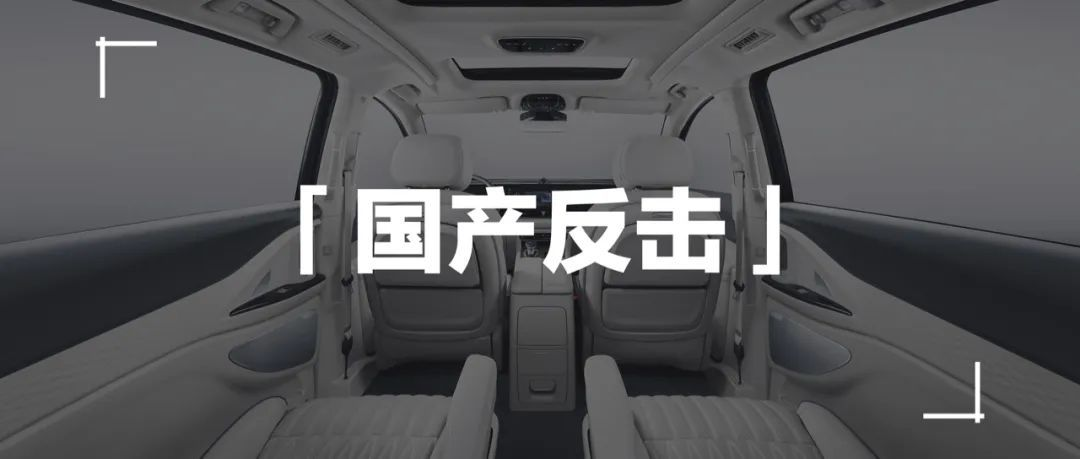On April 7th, Voyah Dreamer (hereinafter referred to as “Dreamer”), finally released the pre-sale price, and officially presented this car model that has been exposed since the birth of the Voyah brand. As the first high-end MPV in Chinese new energy car manufacturers, Dreamer naturally needs to face the test of the market.
There are many questions about Dreamer’s MPV, and we have selected a few sharp ones:
- 380,000 to 600,000 yuan, where does the confidence come from for domestically produced Voyah?
- How does the product compete with “Toyota Alphard, Lexus LM, GL8 Avia, Mercedes-Benz V260, and Saina”?
- “I heard that Voyah’s third row space is very small?” Is this really the case?
Let’s take a look at the answers provided by Dreamer.
The world has been tired of “Qin” for a long time
Dreamer is the second car model under the Voyah brand, positioned as a high-end electric MPV. The entire series still includes two wide versions of extended-range and pure electric, and the more detailed models are divided into a 7-seater version and a customized 4-seater version. From this strategy, the 7-seater version must be for quantity, and the 4-seater version is set to meet specific needs.
Let’s first look at the pre-sale information of Dreamer:
- The pre-sale price range of the 7-seater version is 380,000 to 480,000 yuan. According to the price difference between the extended-range and pure electric versions, the extended-range version may be 380,000 to 430,000 yuan;
- The 7-seater pure electric version is expected to be 430,000 to 480,000 yuan;
- The customized 4-seater version starts at 600,000 yuan;
- The vehicle offers 6 exterior colors and 2 interior colors.
- In terms of endurance, under the CLTC standard, the pure electric version has a range of 600 kilometers and the extended-range version has a range of 700 kilometers.
According to the common practice of car companies, pre-sale prices are generally higher than the final guide prices, so the final price may be lowered by 10,000 to 20,000 yuan.
After the press conference ended, Voyah announced that Dreamer’s order volume had exceeded 1,000 in about 30 minutes since the pre-sale opened on that day. The market recognition of Dreamer is still very high as Voyah APP even briefly crashed due to the high demand. The main reasons for such a phenomenon are twofold, one is the scarcity of the market; the other is the advantage of the product.
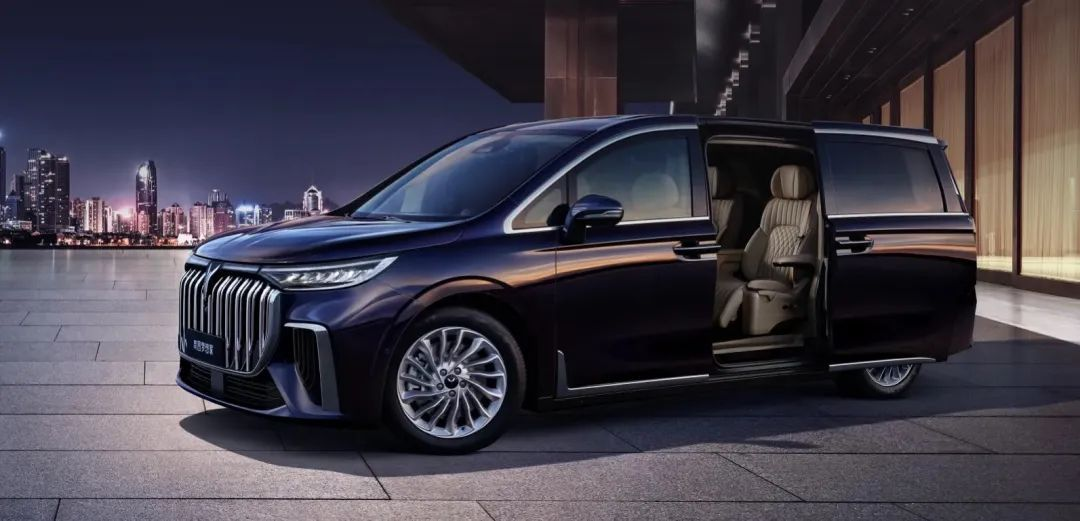
The MPV market is a relatively large subdivided market, with a very large user base in China. However, this market has been dominated by American and Japanese brands for a long time. It is actually very difficult for independent brands to break through in traditional fuel vehicles. GL8, Saina, Alphard, and Lexus LM did have advantages in product offerings during the traditional car era. It was precisely because of this “scarcity” that these products became the “price increase kings” in the market, and even products like the Alphard and LM have appeared with prices that already match their own value.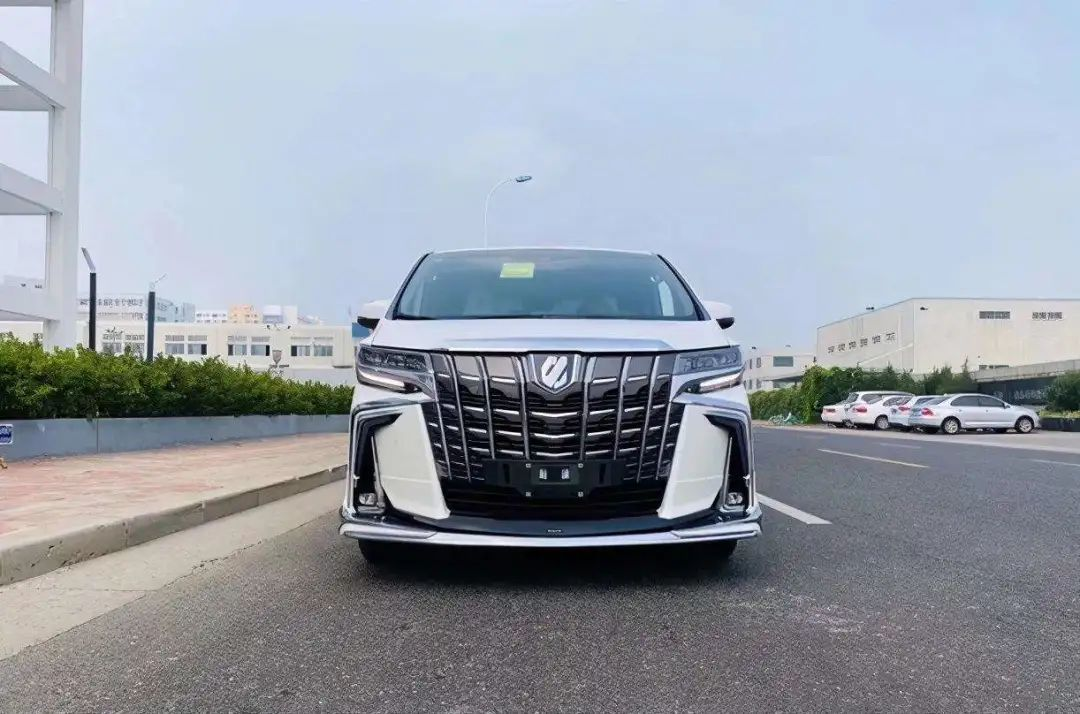
Especially the Alphard, which costs over 300,000 RMB after tax in Japan, you will probably need to pay around 1 million RMB to get it in China. Even so, according to data, “in 2021, Toyota Alphard sold 23,963 units in mainland China, and Lexus LM sold 4,377 units”. Keep in mind that this is a million-level MPV.
In comparison, the more affordable GL8 sold a total of 170,000 units from January to December 2021, with AVIA and ES Lanzun accounting for nearly 60% of the MPV segment.
In other words, the pre-sale price of 380,000 to 480,000 RMB for the Langtu Dreamer has an absolute market basis. At the same time, due to the scarcity of the product, foreign brands have suffered from a serious supply and demand imbalance. However, the Dreamer chose to rise up against the current situation, and the MPVs of Ideal, Xpeng, and DENZA are also on their way.
Having a market is the first step, but how the product performs will determine whether the brand can conquer the “Xianyang City”.
Officially Revealing the “Weapon”
Because the 7-seater version is the main selling model, we will mainly discuss this version next, while the 4-seater custom version can be viewed in our previous static experience.
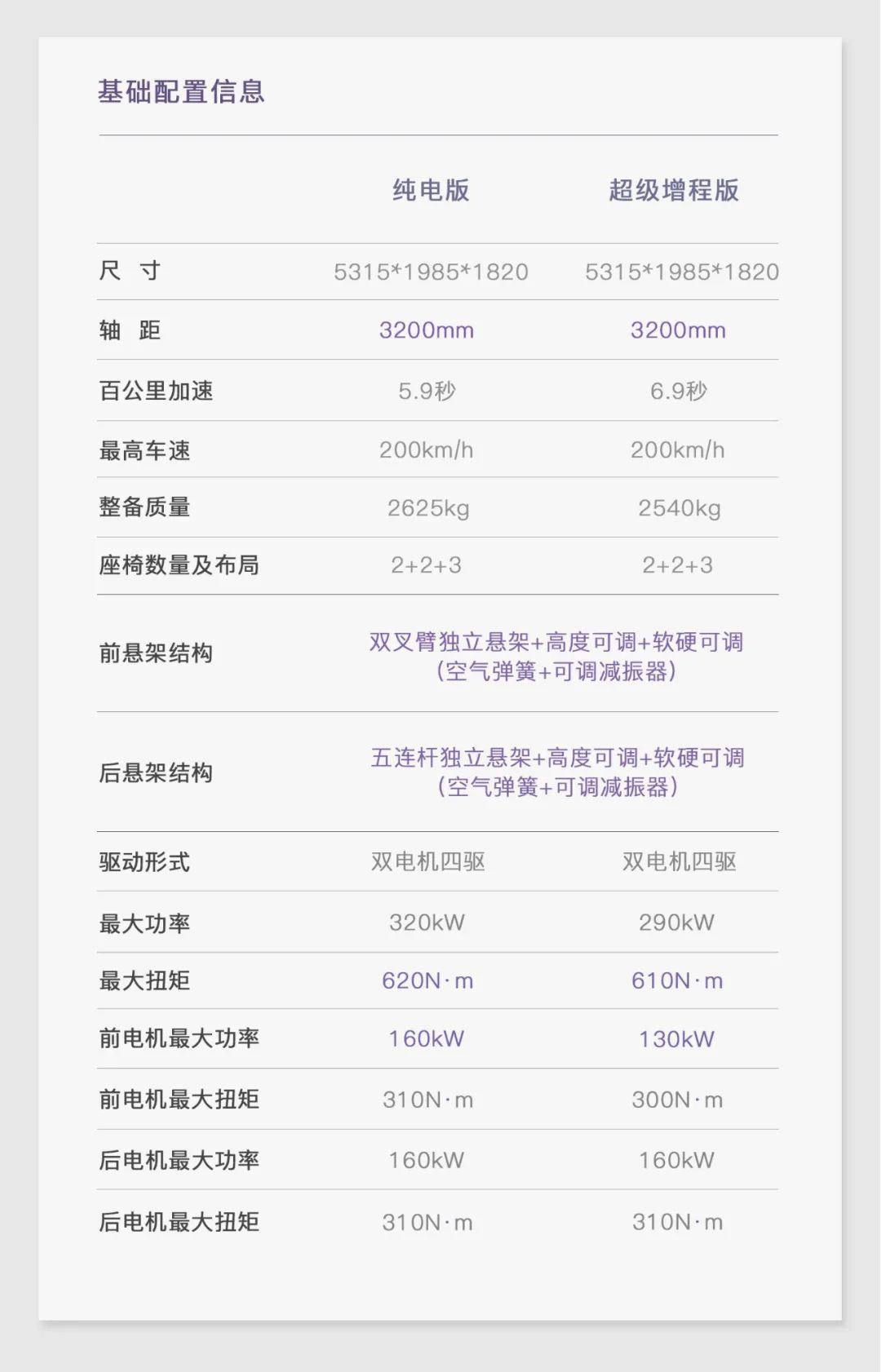
Here are some basic information:
- The Langtu Dreamer has a body size of 5315/1985/1820 mm and a wheelbase of 3200 mm;
- The extended range version of the Dreamer uses a 26 kWh battery, with a pure electric range of 82 km under CLTC standards and a total range of more than 700 km;
- The pure electric version uses an 86 kWh battery, with a range of 475 km under CLTC standards, and an optional 108.7 kWh battery which can extend the range to 605 km.
- The acceleration time of the extended range version is 6.9 seconds per 100 km, while the pure electric version is 5.9 seconds per 100 km, and the maximum speed of both is 200 km/h;
- The Dreamer has a dual-motor four-wheel drive system, with the extended range version having a maximum power of 290 kW and a maximum torque of 610 Nm, and the pure electric version having a power of 320 kW and a torque of 620 Nm;
- The front suspension is a double-wishbone independent suspension, and the rear suspension is a multi-link independent suspension.
What do these features express?
Step One: SpaciousnessThe wheelbase lengths for several major MPVs are as follows: GL8 is 3,088mm, Alphard and LM are both 3,000mm. The Dreamer has a wheelbase of 3,200mm, which is an extremely exaggerated number that brings about the result of providing users with spacious cabin space.
According to the official introduction from Voyah, the Dreamer can accommodate 4 pieces of 24-inch luggage when seating 7 passengers, which basically meets the requirements of MPVs for carrying capacity and can be used for family cars and business receptions.
Of course, “having the ability to carry things” is something that most MPVs on the market can meet, but few products can maintain a balance among all their capabilities.
Earlier, I saw a data comparison chart between the Dreamer and several luxury MPV models online, which perfectly exemplified the phrase “Nobody has what I have, and what I have is even better“.
Step 2: Affordable
From the chart, we can see that the Dreamer skips the GL8 and the Senna and directly targets the Toyota Alphard, Lexus LM, and Mercedes-Benz V260L. Regardless of whether they are in the same class, this strategy is correct as it leaves a strong first impression of “luxury MPV” and strikes a clear target.
Regarding price, the 2021 Alphard Ultimate Edition, which is rumored to have the same powertrain as the Dreamer, is priced at 920,000 RMB, which is still 240,000 RMB more expensive than the Lexus LM, and the cheapest Mercedes-Benz V260 L is 253,200 RMB more expensive than the Alphard, and 513,200 RMB more expensive than the LM.
This means that the Dreamer achieves the above data performance with only half the price compared to its competitors.
Step 3: Exceed Expectations
The Dreamer is a “high-end” MPV, and the most direct way to interpret “high-end” is to have all the top-notch features.
The Dreamer comes standard with front double-wishbone and rear five-link independent suspension, coupled with air suspension and CDC active damping system, which can provide a comfortable driving experience. This has been proven on the Voyah FREE, while the other products have front McPherson and rear double-wishbone suspensions. In terms of hardware configuration, it is clear that the Dreamer has an absolute advantage.
You may argue that hardware is not the only factor and tuning is also crucial. Although the tuning of the previous few products is already very high, the hardware ceiling of the Dreamer is very high, and most importantly, as an intelligent electric car, it can support OTA and change the driving experience throughout its lifecycle.
In short, the Dreamer has a high hardware ceiling and is extremely flexible and versatile.In terms of power, the Dream Plus model has a total output power of 310 kW and a torque of 610 N·m, accelerating from 0 to 100 km/h in 6.9 seconds with a fuel consumption of 7.4 L. Let’s take a look at some competitors:
- The Toyota Alphard Zenith costs 920,000 RMB with a maximum power of 155 kW, a torque of 409 N·m, a time of over 8 seconds for accelerating from 0 to 100 km/h, and a fuel consumption of 7.8 L.
- The Lexus LM 300H costs 1,160,000 RMB with a maximum power of 155 kW, a torque of 409 N·m, a time of over 8 seconds for accelerating from 0 to 100 km/h, and a fuel consumption of 7.8 L.
- The Mercedes-Benz V260L costs 646,800 RMB with a maximum power of 155 kW, a torque of 350 N·m, and a fuel consumption of 9.57 L.
The Dream Plus is the most powerful electric MPV in mass production. You may ask, “Why does an MPV need such strong power?” Many people think that family or business cars do not need such strong power. However, a survey conducted by a car manufacturer and a consulting company on MPV user profiles shows that users of high-end MPVs costing between 300,000 to 500,000 RMB are generally urban families between the ages of 32 and 38. This group of users has a diverse range of usage scenarios and, in fact, has a real demand for power.
As Dr. Lu Fang, CEO of LanTu Automotive, said, “Most MPVs on the market do not pay much attention to the driver’s driving experience.”
Therefore, the question should be reversed: “When I need to carry many people, is the power you provide enough?”
In short, the point is not to compare who is stronger or weaker, but whether the product can provide power redundancy when users need it. For products costing tens of thousands of RMB, power is the feature that can be unused but must exist.
Other Configurations
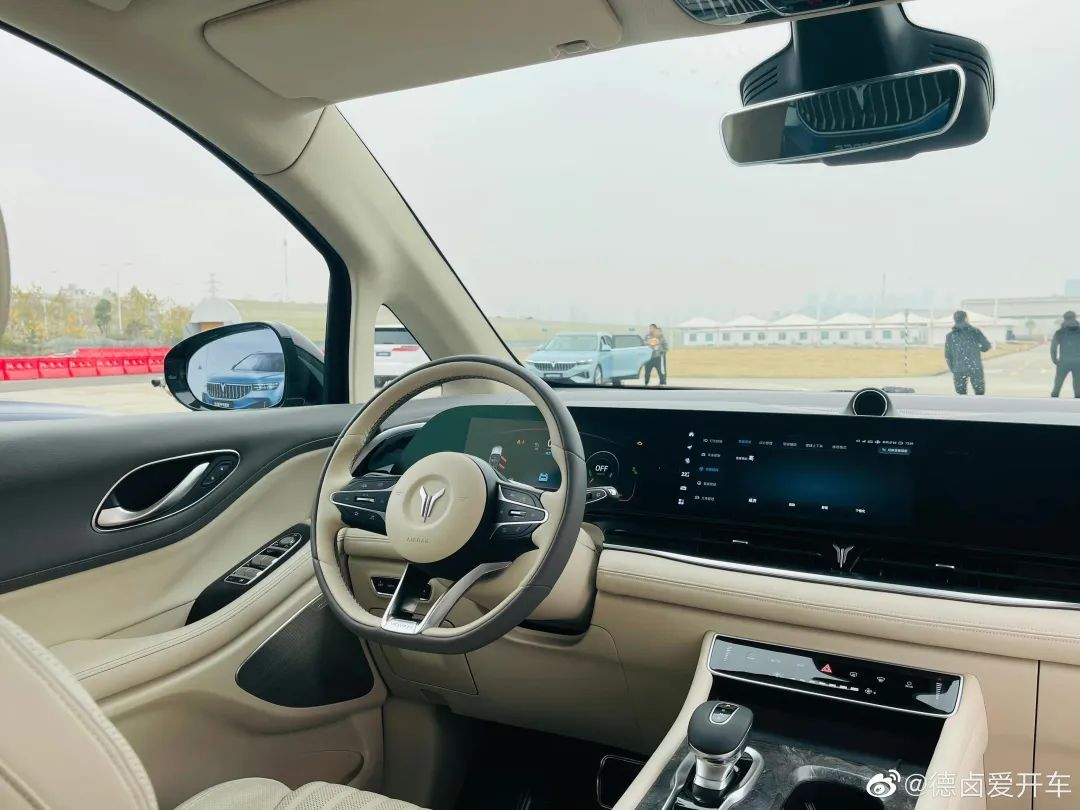
The Dream Plus uses a 1.4-meter panoramic three-screen display without a lifting device. The car’s chip uses the currently mainstream 8155 car chip and 5G car network. The effect of the Denon sound system (optional) and sound insulation and noise reduction needs to be experienced during test drives. According to official statistics from LanTu, the Dream Plus has over 80 NVH noise reduction components in the car. Its specific performance needs to be experienced.
On the software side, features such as RPA remote parking, APA automatic parking in any scenario, 360° panoramic view can solve the problem of parking large vehicles. The car has a four-audio-zone voice interaction system, gesture recognition interaction, intelligent air management system, and other configurations.In conclusion, Voyah Dreamer’s strategy is clear: to compete with products like the GL8 and the Senia that have high-end luxury hardware and configurations by offering the same, and to compete with high-end MPVs by offering a significantly superior price advantage. This strategy is similar to that of NIO.
In addition, Voyah Dreamer has the characteristics of smooth driving, comfortable seating, and cost-efficiency that are typical in electric cars. The products themselves, such as the Toyota Alphard, Lexus LM, GL8 Aviar, Mercedes-Benz V260, and Senia, have strong product power, as evidenced by their strong sales performance. Even without new energy vehicles, they would continue to lead the market.
However, the difference lies in the fact that “the emergence of new energy vehicles and the progress of domestic brands in product development are reducing the advantages of products built around internal combustion engines, particularly as domestic brands establish their leadership in intelligence, and the users are recognizing more and more that ‘good cars’ and ‘luxury cars’ are not only about price and brand.”
Pros and Cons
While Voyah Dreamer has many advantages, it also has its drawbacks.
First of all, as a large-sized MPV, it is both an advantage and a disadvantage. The length of Voyah Dreamer vehicle is already up to 5.3 meters, which has discouraged many female drivers and even some male experienced drivers. Especially in cities with small parking space, the car size is somewhat large, even with 360-degree surround view assistance.
Another concern that has been widely discussed on the Internet is how big the third row of seats in Voyah Dreamer is. This is due to the air suspension and CDC system configuration, which takes up a small amount of space above the rear axle and restricts the layout of the third row of seats.
However, the fact is that the clearance depth between the second and third rows is very large. If the second-row seats are adjusted to the rear-most position, the third row of Voyah Dreamer can only accommodate children. However, not only Voyah Dreamer, but all MPVs on the market are like this. If you want the third row to accommodate adults, you must adjust the second-row seats.
Last year, I actually experienced Voyah Dreamer’s space in Wuhan. I am 180 cm tall and weigh 168 pounds. When the second-row seat was adjusted to the appropriate position, the third row was also just right to accommodate me. The second-row seat was positioned in the center slightly behind the seat rail.
In summary, Voyah Dreamer is a product that strives for “balance” from multiple perspectives, with its biggest advantage being its outstanding performance, matched with a reasonable price.There are also some drawbacks, such as the fact that urban driving vehicles have a relatively large body size. Since the introduction of products like the GAC GM8, BYD Song MAX, and Geely Jiaji, domestic brands have been trying to make a mark in the MPV market segment. However, they can only be active in the low-end market, and rely on the strategy of “low price”.
After the rapid development of new energy vehicles in China, NIO, Ideal, XPeng, Voyah, and Zeekr have all proven that domestic brands are not worse than joint venture brands in making high-end vehicles. Even in terms of user experience, they are equally competitive or better, and their ability to be intelligent is exceptional.
As for the market performance of the Voyah Dream Traveler, we await further news. However, the introduction of domestically produced high-end MPVs is sure to cause a wave. Do you remember the launch of the Volkswagen Touareg in 2007, breaking the nearly monopolized 200,000-300,000 yuan SUV market by Japanese brands, and marking the beginning of the era of German SUVs dominating the Chinese market? Unfortunately, the Touareg is still a foreign brand.
The MPV market needs someone to break the trend, and Voyah is just the beginning.
This article is a translation by ChatGPT of a Chinese report from 42HOW. If you have any questions about it, please email bd@42how.com.
